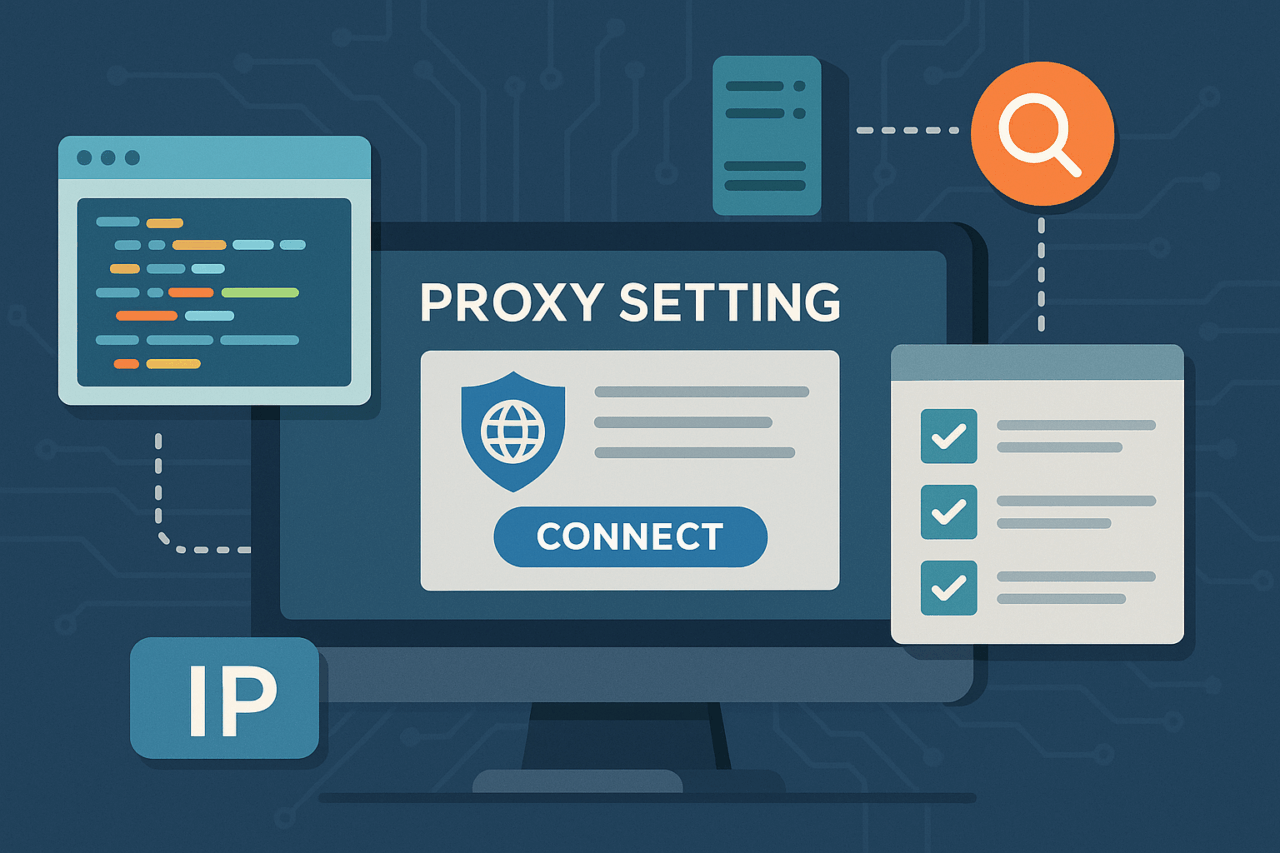By Edelmiro
Selecting the right proxy for web scraping is akin to choosing the right antenna for a precise radio transmission, or positioning your bishop at the perfect diagonal in chess. Both require careful consideration, strategy, and an understanding of the tools and terrain. This article will guide you methodically through the proxy landscape, whether you’re tuning in for the first time or orchestrating a large-scale data-gathering operation.
Understanding Proxies: The Signal Repeaters of the Web
A proxy acts as an intermediary—your request goes to the proxy, which forwards it to the target website, and then relays the response back to you. In radio terms, think of it as a repeater that masks the origin of your transmission, helping you avoid unwanted attention and signal jamming.
Why Use Proxies for Web Scraping?
– Avoid IP blocks: Like a chess player disguising their opening, proxies help you avoid being detected and blocked.
– Bypass geolocation restrictions: Access data as if you’re in another country—much like tuning into international broadcasts.
– Increase scraping speed: Distribute requests across multiple proxies and parallelize your efforts.
Types of Proxies: The Arsenal
Let’s survey the main proxy types, each with its strengths and weaknesses—just as one chooses between a rook and a knight depending on the board’s configuration.
1. Datacenter Proxies
- Description: Provided by cloud service providers, not affiliated with Internet Service Providers (ISPs).
- Pros: Fast, affordable, easy to scale.
- Cons: Easier to detect; some websites block these IPs outright.
- Best For: High-volume, low-sensitivity scraping (e.g., public product listings).
Example: Like using a mass-produced radio transmitter—efficient, but not subtle.
2. Residential Proxies
- Description: IPs assigned to real residential devices by ISPs.
- Pros: Harder to detect, mimic real users.
- Cons: More expensive, sometimes slower.
- Best For: Scraping sites with strict anti-bot measures (e.g., social media).
Analogy: A well-tuned shortwave radio—harder to trace, excellent for delicate operations.
3. Mobile Proxies
- Description: IPs assigned to mobile devices via cellular networks.
- Pros: Excellent for bypassing advanced security; appear as typical mobile users.
- Cons: Most expensive, limited bandwidth.
- Best For: Highly protected sites, or when mobile-specific content is required.
Chess Note: The queen—powerful, but costly to wield.
4. Rotating Proxies
- Description: Automatically change IPs with each request or at set intervals.
- Pros: Reduces risk of detection, supports massive concurrent requests.
- Cons: More complexity, potential for inconsistent connections.
- Best For: Large-scale operations needing many IPs.
Tip: Imagine a frequency-hopping radio—always a step ahead of jammers.
Key Criteria for Proxy Selection
When evaluating proxies, consider these factors as you would in a strategic chess opening—anticipate both your moves and your opponent’s.
1. Anonymity
- High Anonymity (Elite): Best for avoiding detection.
- Transparent/Semi-transparent: May leak your real IP—use with caution.
Tip: For sensitive scraping, always choose high-anonymity proxies.
2. Speed and Reliability
- Test proxies for latency and uptime.
- A slow or unreliable proxy is like a corroded circuit—introduces noise and errors.
3. Location Diversity
- Select proxies from regions relevant to your target site.
- Some sites serve different content or block foreign IPs.
4. IP Pool Size
- Larger pools reduce chance of IP bans.
- For high-frequency scraping, a modest pool quickly becomes exhausted.
5. Legitimacy and Ethics
- Use only reputable providers.
- Avoid free proxies—many are compromised or illegal, akin to using a pirated radio frequency.
Choosing by Use Case: Like Picking the Right Opening
Lightweight, Non-sensitive Scraping
- Recommended: Datacenter proxies.
- Example: Extracting product prices from an e-commerce site with low anti-bot measures.
Moderate to Heavy Scraping, Some Anti-bot Measures
- Recommended: Residential or rotating datacenter proxies.
- Example: Gathering data from job boards or real estate listings.
Scraping Sites with Aggressive Bot Protection
- Recommended: Residential or mobile proxies, rotating as needed.
- Example: Social media, sneaker sites, ticketing platforms.
Practical Tips: From the Workbench
- Test before you buy: Most proxy providers offer trial periods—use them to assess speed and compatibility.
- Monitor IP bans and blocks: Rotate proxies regularly, and implement back-off strategies to avoid detection.
- Respect robots.txt and site policies: Good engineering is also ethical engineering.
- Consider session persistence: Some scraping tasks (like logging in) require “sticky” IPs that persist for multiple requests.
Conclusion: The Craft of Proxy Selection
Choosing the right proxy for web scraping is a blend of art and engineering—strategy and careful calibration. Like setting up a reliable radio link or planning a decisive chess gambit, it pays to weigh your options, know your objectives, and respect the medium.
Remember: The best proxy is not always the most expensive, but the one best matched to your task and constraints. Scraping, when done thoughtfully, is a game of patience and precision—qualities any craftsman, or chess player, would admire.
Edelmiro, signing off—wishing you clear signals and checkmate in your data pursuits.

Comments (0)
There are no comments here yet, you can be the first!